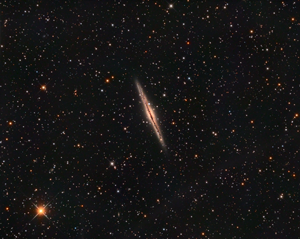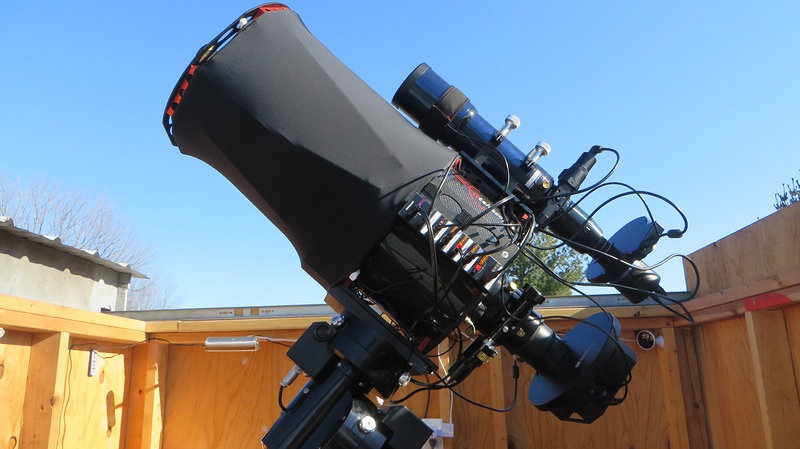I am extremely pleased to report that a plan I put in place 1 year ago, to have a dual scope/camera imaging rig, has finally come together and I am very, very pleased with the initial results. It all began last November as I was looking for a longer focal length scope in order to image more galaxies and smaller objects, and given my sky conditions and mount capacity I felt that a 10" RC was best suited for my needs. I settled on a CFF250RC, which I finally received several weeks ago.
Shortly after ordering the CFF last December I began to see the benefits of CMOS cameras that thrive on many short exposures, specifically as it relates to dual scope imaging. Dual scope imaging carries with it several inherent problems, one of the largest being differential flexure between the scopes. This is particularly true when using two of the exact same scopes that both need to be pointed at exactly the same position in the sky. This leads to another large problem with dual scopes, needing to align those two scopes precisely.
So I began to think about a dual scope/camera rig that does not use the same scopes. Long story short, I paired my SV80ST with a QHY163M and the CFF with a 16200 camera. Since the SV80ST/QHY163M has about twice the FOV and image scale, I don’t have to worry too much about exactly aligning the scopes to the same position in the sky. I just clamped the SV80ST on top of the CFF and hoped alignment was good enough. I did need to shim one scope ring to move the focuser end of the SV80ST up a little, and I also needed to shift the dovetail plate slightly laterally in one direction, but the star alignment between the scopes is “good enough” and I didn’t have to bother with some kind of X/Y positioning plate.
Also, since the QHY163M is taking short exposures it avoids differential flexure or polar misalignment problems that would lead to star rotation etc that would happen with longer exposures.
So while the CFF/16200 is taking 10min LUM subs, the SV80ST/QHY163 is taking 3min RGB subs. So on average I get an RGB image for every LUM image.
I really don’t have the knowledge to professionally plan all this out. In fact, a few people kindly advised me to reconsider, or at least warned me about what I was in for. grin.gif But really, with the CMOS camera it was easy. I just bolted everything together and hoped for the best, and I’m pretty pleased with things so far.
As a first test, I had the CFF scope at f/8 (in normal practice I will probably keep it at f/6). I chose NGC891. When I began this I wasn’t really expecting an image to come out of it as I was just testing things out, but the tests went well so I kept getting data. The really cool thing…I got most of the 17.5hrs of data in ONE NIGHT. Getting 10hrs of LUM data really helps smooth things out and I didn’t do ANY noise reduction on the LUM data. The RGB was of course more noisy and I was somewhat aggressive with noise reduction in the RGB, but that’s the beauty of LRGB imaging.
Below is a pic of my imaging rig.

